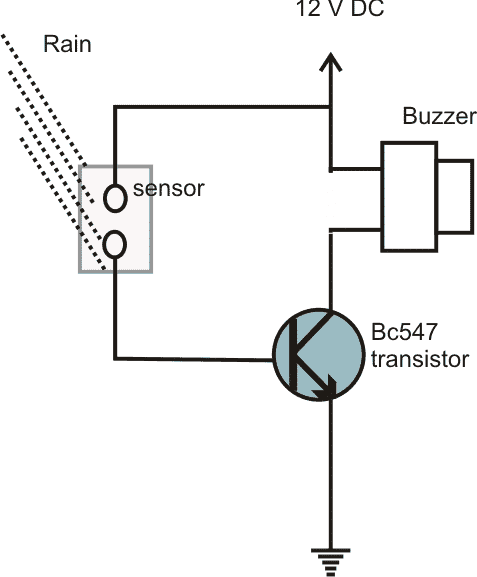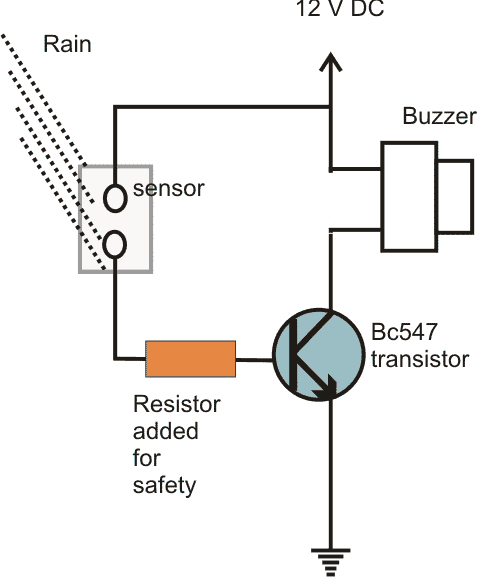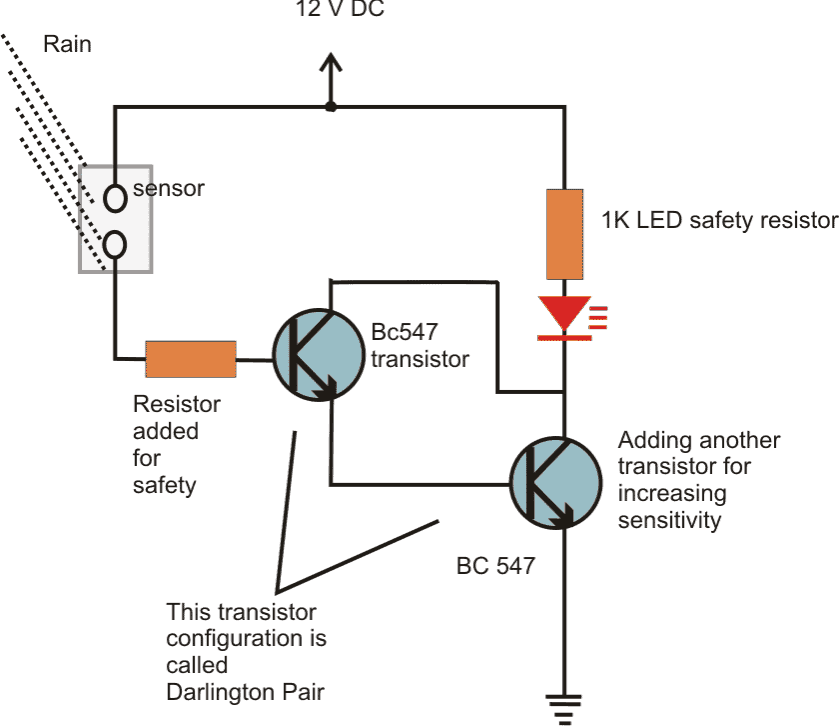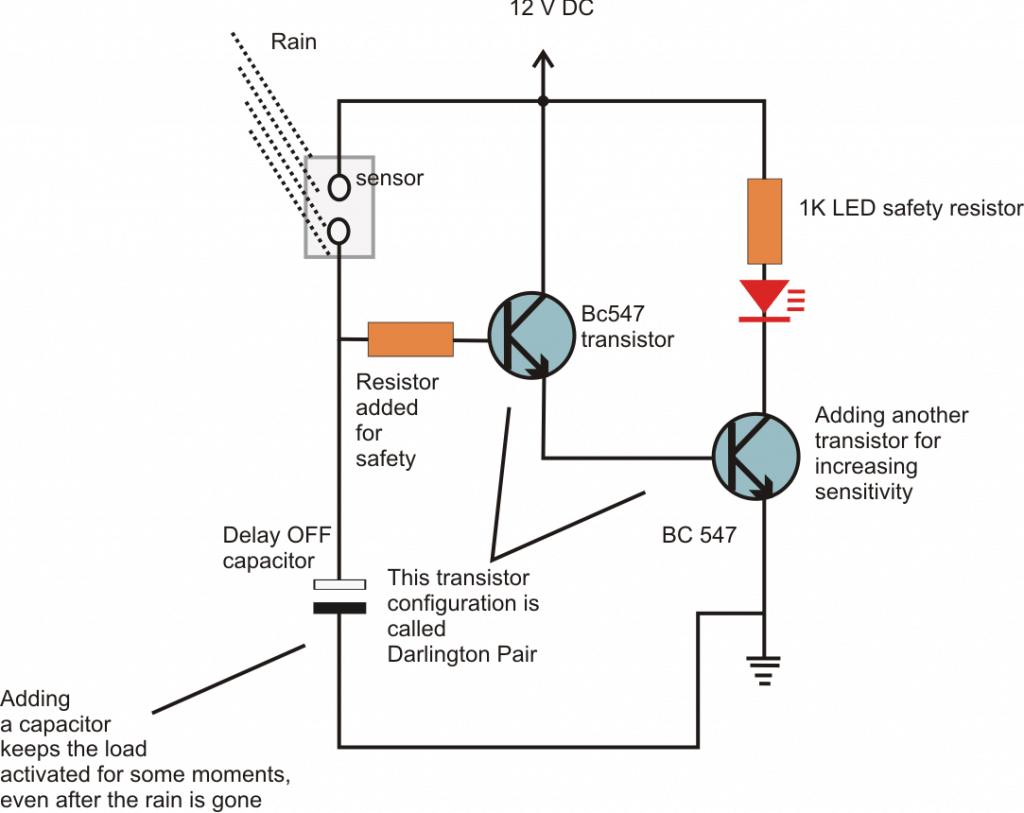In this post we try to evaluate how to configure or connect electronic components such as resistors, capacitors withing electronic circuits through correct calculation
Kindly read my previous post regarding what is voltage and current, in order to grasp the below explained basic electronic facts more effectively.
What is a Resistor
– It is an electronic component used for resisting the flow of electrons or the current. It is used to safeguard electronic components by restricting the flow of current when voltage increases.LEDs require resistors in series for the same reason so that they can be operated at voltages higher than the specified rating. Other active components like transistors, mosfets, triacs, SCRs also incorporate resistors for the same reasons.
What is a Capacitor
It is an electronic component which stores a certain amount of electric charge or simply the applied voltage/current, when its leads are connected across the relevant supply points.The component is basically rated with a couple of units, microfarad and voltage. The "microfarad" decides the amount of current it can store and the voltage defines how much maximum voltage may be applied across it or stored in it. The voltage rating is critical, if it exceeds the marking, the capacitor will simply explode.
Storing ability of these components means that the stored energy becomes usable, therefore these are used as filters where the stored voltage is used for filling the blank spaces or voltage depressions in the source supply, thus filling up or smoothing the ditches in the line.
The stored energy also becomes applicable when it’s released slowly through a restricting component like a resistor. Here, the time consumed by the capacitor to charge fully or discharge fully becomes ideal for timer applications, where the capacitor value decides the timing range of the unit. Therefore these are used in timers, oscillators etc.
Another feature is, once a capacitor is fully charged it refuses to pass any more current/voltage and stops the flow of the current across its leads, meaning the applied current passes across its leads only in the course of charging and is blocked once the charging process is completed.
This feature is exploited for enabling switching of a particular active component momentarily. For example if a triggering voltage is applied to the base of a transistor via a capacitor, it would get activated only for a particular fragment of time, until the capacitor gets fully charged, after which the transistor stops conducting. The same thing may be witnessed with an LED when powered through a capacitor; it illuminates for a fraction of a second and then shuts off.
What is a Transistor
It’s a semiconductor component having three leads or legs. The legs can be wired such that one leg becomes a common outlet for the voltages applied to the other two legs.The common leg is called the emitter, while the other two legs are named as base and the collector. The base receives the switching trigger with reference to emitter and this enables relatively huge voltage and current for passing from collector to emitter.
This arrangement makes it work like a switch. Therefore any load connected at the collector can be switched ON or OFF with relatively tiny potentials at the base of the device.
The voltages applied at the base and the collector finally reach the common destination through the emitter. The emitter is connected to ground for NPN type and to positive for PNP types of transistor. NPN and PNP are complementary to each other and operate exactly in the same manner but by using the opposite directions or polarities with voltages and currents.
What is a Diode:
Please refer this article for the complete info.
What is a SCR:
It can be quite compared to a transistor and is also used as a switch in electronic circuits. The three leads or legs are specified as the gate, the anode and the cathode. The cathode is the common terminal which becomes the receiving path for the voltages applied at gate and the anode of the device.The gate is the triggering point which switches the power connected to anode across the common leg of cathode.
However unlike transistors the gate of an SCR requires higher amount of voltage and current and moreover the device can be used for switching exclusively AC across its anode and cathode. Therefore it becomes useful for switching AC loads in response to the triggers received at its gate; but the gate will need purely a DC potential for implementing the operations.
Implementing the above components in a practical circuit:
How to Configure Resistors, Capacitors and Transistors in Electronic Circuits......?
Using and implementing electronic parts practically in electronic circuits is the ultimate thing that any electronic hobbyist intends to learn and master. Though it’s easier said than done, the following couple of examples will help you to understand regarding how resistors, capacitors, transistors can be set up for building a particular application circuit:
Since the subject can be too huge and may fill volumes, we will be discussing only a single circuit comprising transistor, capacitor, resistors and LED.
Basically an active component takes the center stage in an electronic circuit, while the passive components perform the supporting role.
Let’s say we want to make a rain sensor circuit. Since the transistor is the main active component, must take the center stage. So we place it right at the center of the schematic.

The three leads of the transistors are open and needs the required setting up via the passive parts.
As explained above, the emitter is the common outlet. Since we are using an NPN type of transistor, the emitter must go to the ground, so we connect it to the ground or the negative supply rail of the circuit.
The base is the main sensing or the triggering input, so this input needs to be connected to the sensor element. The sensor element here is a pair of metal terminals.
One of the terminals is connected to the positive supply and the other terminal needs to be connected to the base of the transistor.
The sensor is used to detect the presence of rain water. The moment raining begins; the water droplets bridge the two terminals. Since water has a low resistance, starts leaking the positive voltage across its terminals, to the base of the transistor.
This leaking voltage feeds the base of the transistor and in the course reaches the ground through the emitter. The moment this happens, as per the property of the device, it opens the gates between the collector and the emitter.
It means that now if we connect a positive voltage source to the collector, it will be immediately connected to the ground via its emitter.
Therefore we connect the collector of the transistor to the positive, however we do this via the load so that the load operates with the switching, and that’s exactly what we are looking for.
Simulating the above operation quickly, we see that the positive supply leaks through the metal terminals of the sensor, touches the base and carries on its course to finally reach the ground completing the base circuit, however this operation instantly pulls the collector voltage to the ground via the emitter, switching ON the load which is a buzzer here. The buzzer sounds.
This set up is the basic set up, however it needs many corrections and also can be modified in many different ways.

Looking at the schematic we find that the circuit does not include a base resistor because the water itself acts as a resistor, but what happens if the sensor terminals are accidentally shorted, the entire current would be dumped to the base of the transistor, frying it instantly.
Therefore for safety reasons we add a resistor to the base of the transistor. However the base resistor value decides how much triggering current can enter across the base/emitter pins, and therefore in turn affects the collector current. Conversely, the base resistor should be such that it allows sufficient current to be pulled from collector to the emitter, permitting perfect switching of the collector load.
For easier calculations, as a rule of thumb, we can assume the base resistor value to be 40 times more than the collector load resistance.
So, in our circuit, assuming the collector load is a buzzer, we measure the resistance of the buzzer which amounts to say 10K. 40 times 10K means the base resistance must be somewhere around 400K, however we find that the water resistance is around 50K, so deducting this value from 400K, we get 350K, that’s the base resistor value we need to select.
Now suppose we want to connect an LED to this circuit instead of a buzzer. We cannot connect the LED directly to the collector of the transistor because LEDs are also vulnerable and will require a current limiting resistor if the operating voltage is higher than its specified forward voltage.

Therefore we connect a LED in series with a 1K resistor across the collector and positive of the above circuit, replacing the buzzer.
Now the resistor in series with the LED may be considered as the collector load resistance.
So now the base resistance should be 40 times this value, which amounts to 40K, however the water resistance itself is 150K, means the base resistance is already too high, meaning when rain water bridges the sensor, the transistor won’t be able to switch ON the LED brightly, rather will illuminate it very dimly.
So how can we solve this problem?
We need to make the transistor more sensitive, so we connect another transistor to aid the existing one in a Darlington configuration. With this arrangement the transistor pair becomes highly sensitive, at least 25 times more sensitive than the previous circuit.
25 times more sensitivity means we can select a base resistance that may be 25+40 = 65 to 75 times the collector resistance; we get the maximum range of about 75 into 10 = 750K, so this can be taken as the total value of the base resistor.
Deducting 150K water resistance from 750K we get 600K, so that’s the base resistor value we can choose for the present configuration. Remember the case resistor can be any value as long as it’s fulfilling two conditions: it’s not heating up the transistor and it’s helping to switch the collector load satisfactorily. That’s it.

Now suppose we add a capacitor across the base of the transistor and the ground. The capacitor, as explained above will store initially some current when raining begins through the leakages across the sensor terminals.
Now after the rain stops, and the sensor bridge leakage is disconnected, the transistor still keeps conducting sounding the buzzer…how? The stored voltage inside the capacitor now feeds the transistor base and keeps it switched ON until it has discharged below the base switching voltage. This shows how a capacitor might serve in an electronic circuit.
So how would you put this in more complicated circuits
I love your blog. Sir how can I calculate the exact value of voltage needed for a transistor, a resistor and a capacitor to fit in a circuit?
Thanks Miracle, It depends exactly where you want to connect the resistor. For base you can use the following formula:
R = (Supply – 0.6)hFE / Collector load current
Hai, Could you tell me how to choose the capacitor voltage rating for a circuit?
Example, If I am using 12vDC as a power supply for a circuit, then what should be the voltage rating for the capacitors which are using in that circuit?
Hi, technically just a 3V plus is enough, meaning if your supply is 12V you can use a 15V rated capacitor…..but as a rule of thumb and for extreme safety it is always recommended to select a voltage level that's twice of the supply voltage….so in your case you must use a 25V rated cap.
Thanks for the replay. suppose if I use 63volt rating capacitor for a 12volt power supply circuit means what will happen? will there be any changes in the circuit operation?
higher voltage will only increase the safety margin, so no problem in using a much higher rated capacitor…..voltage rating has no relation to the circuit functioning it only indicates the breakdown limit of the device….the limit above which the capacitor can get destroyed.
Many Thanks for the info again Swagatam! I can see the sample you told me. Have a good night!
My pleasure….!
Many thanks for the info Swagatam! I´ve supposed this circuit could be made more simple using for example one 220K Resistance and one or two 2N3906 Transistor but I don´t if its possible and you have any info about that possibility. We are using in our boats gel cell batteries, 6 or 12 volts. Thanks again and have a nice day! Manuel.
Thanks Manuel! yes it can done using the third configuration from the above article, the LED/resistor could be replaced by a relay for the required switching when a water is sensed across the shown terminals of the circuit. the relay contacts could be further wired with the intended load
the relay must be accompanied with a free wheeling diode, I hope you are aware about it.
Dear Sir: I have a question about your good article on water sensor electronics. What if I need use this circuit to shut off a compresor or water pump in a RC model boating installation? I will be very pleased if you can show me the way to connect both darlingtons and resistances. Many thanks in advance, Manuel.
Dear Manuel,
Yes it can be certainly done, please refer to the following post, it shows a similar application which could be also employed by you for your particular need
https://www.homemade-circuits.com/2012/04/cheap-semi-automatic-tank-water-over.html
dear sir . pls can you desing the 5kw avr circuit .
iam saman form srilanka
i like so much your blogger.
thanks
thanks kumara, can you please provide the voltage limits.
hello sir Swagatam i really like your blog all about circuits and it is really awesome, all of them..
Thanks very much Erns!
hi dear sir like that of above blog could you please publish blog which can tell difference between AC & DC And also its Advantages & disadvantages of both.
Hi swapnil, in AC the current fluctuates from positive to negative many times per second depending upon its frequency, while in DC the current is stable, it's either positive or negative but never oscillating…
both are equally advantageous, depends on the application.
can you provide circuit for a wireless camera because i want to fix an webcam on my remote control car and fix the wireless speakers you provide circuit of.
Thanz in advance.
sorry no, wireless camera would be too complex to design!
thankz for giving us such a useful information about designing a circuit
you are welcome!
sir i cannot under stand that from wherethe base of a transistor gets negative power supply in an NPN transistor because a transistor would be having some type of electromagnet in it.
THanz in advance.
the negative is received from the emitter….the base will respond to positive always for NPN devices.
A transistor have three terminals colecter ,base and emitter the negative supply in an NPN transistor is taken from emitter and positive from base for the transistor to work all the load is put on collrctor pin and eletcric charge is taken from emitter . Am i correct?
how much electricity is required to trig a NPN transistor and a PNP transistor ? how will we know how much max. current can we pass through collector ?
Thanz in advance.
load is put on collector than why is collector not called emmiter and emitter always recieves so why emitter is not called collector?
yes that's correct.
voltage, current of a transistor are specified by the manufacturer and can be found through their datasheets.